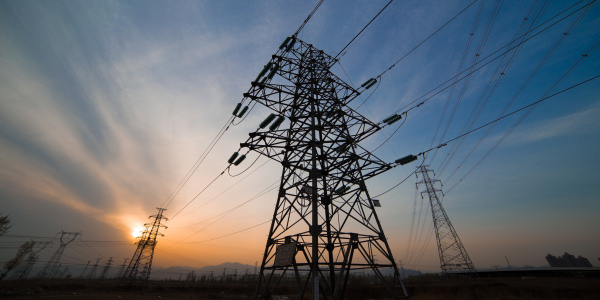What caused the power blackout in August?
Published on 9th September, 2019
At 5pm on Friday 9th August, there were widespread power failures across England and Wales which resulted in the disconnection of over 1 million customers. About 60 Govia Thameslink trains were affected and all trains out of Kings Cross were suspended causing major travel problems – by 9pm one thousand passengers were stranded. Newcastle Airport and London Underground were affected and Ipswich Hospital completely lost power for half an hour when a back-up generator also failed.
Setting aside for a moment the question of whether these blackouts could have been avoided there does not yet, almost a month on, seem to be a clear picture of what happened on the day.

It is known that two generators failed almost simultaneously – the RWE-owned gas-fired generator at Little Barford and the offshore wind installation at Hornsea owned by Danish company Orsted. It is also known that lightning strikes were “associated” with the failures. The reaction of the area distribution companies via load shedding also came under scrutiny.
The precise chain of events will no doubt be further clarified by the full technical report due to be submitted by National Grid on September 6th. But it is already clear that there is no simple answer and numerous factors were involved. Ofgem has initiated an investigation into whether any parties involved have breached their licence conditions and the possibility of significant financial penalties has been raised.
Events of this kind will always provoke reaction and instant speculation.
It is fair to say that the fact of a loss of around 2 gigawatts of generation caused such widespread disruption raised eyebrows, and inevitably the question has been raised about whether the National Grid is doing its job properly.
It is also the case that people have been saying for some time that the growing proportion of renewable generation would present challenges to the stability of the UK system because of their intermittent nature.
Some have pointed the finger at the fact that there has been a decline in the level of “inertia” provided by synchronous generation – a property provided only by some non-renewable generators. Others have claimed that there is not much the National Grid could have done about this specific combination of events and that it is perhaps more appropriate to look at the actions of the two generators and the distribution companies.
For its part, the Grid makes the point that the systemic issues raised by the evolving generation mix is a core part of its ongoing operational practice review, and that there are also a number of new initiatives already in place – including Loss of Mains protection settings for embedded generators and a ‘pathfinder’ project to find new sources of inertia and frequency response services.
Recognising the above, the Industry regulators will want to make sure that the causes and lessons of this puzzling incident are properly understood.
EnDCo is a supplier in the I&C market and offers direct, transparent and independent access to the wholesale market – enabling producers and consumers alike to find the solution which best suits their needs.
For further information, please email me at: les.abbie@endco.co.uk
Les Abbie, CEO, EnDCo


 REPORTS
REPORTS 

